27 Jul Detroit, Let’s All be Urban Planners
A version of this post appeared first in The Detroit News’ Dvoice Blog.
I’m a lifelong Detroiter who spent the better half of my twenties dreaming up creative ideas for activating underused spaces with creative businesses and pop-up shops. I worked to inspire young people to live here and help shape their community into a place they wanted to be with I Am Young Detroit.
When I heard about K880 Emerging City Champions, I jumped at the opportunity. The fellowship program, spearheaded by Canada’s 8 80 Cities with funding from The Knight Foundation, promised to provide “young, emerging and diverse leaders with the opportunity to make immediate and lasting impacts in their communities”. Needless to say, I was so down and applied straight away.
My winning idea was Block x Block, a fundraising tool and community event developed to help everyday citizens support the neighborhood projects and local brands they care about most. Soon, visitors will be able to shop BlockxBlock.com for goods designed exclusively for and by local Builders: makers, artisans and curators. Goods are sold “by the block” with $5 in Block Bucks from each block contributing to a neighborhood project.
I arrived to the K880 Studio in Toronto still apprehensive, now also intimidated not only by my 24 fellow fellows (who all seemed to have already had some experience working with or for their respective city governments), but by 8 80 founder Gil Penalosa. Gil and the rest of the team live by the ethos that “if you build a city that is great for an eight-year-old and an eighty-year-old, then you build a city that is going to be great for everybody” – hence the name 8 80 Cities. As soon as Gil started speaking, I began to imagine what Detroit could be if we were in line with that school of thought. We spent the bulk of the experience, exploring Toronto and its public spaces, learning about its infrastructure and development. We also attended workshops and presentations to help fuel our leadership and capacity to lead our own projects. I left, feeling empowered and confident, perhaps a little less so when I got back on Detroit soil as the challenge was presented right in front of me and made real again. Still, here’s what I brought back that I want to share with the masses:
1. We should all be urban planners.
How can we, as citizens, help ensure that our neighborhoods aren’t left behind in the midst of revitalization efforts? By becoming urban planners ourselves. We should all feel a sense of ownership when it comes to our community’s land and how it’s used. It’s time for us to play a more active role in making our neighborhoods great for eight-year-olds and eighty-year-olds. In my own neighborhood (dubbed “The Eye” several years back by unknown forces), on Detroit’s west side, we often have to travel to neighboring Redford Township to take advantage of nearby public parks and activities. Our main street is glittered with vacant commercial spaces and grey gravel. We have a ton of kids and elders in the area, but no gathering place for them. My urban plan? I’m working with neighbors to develop Vision Detroit, a community development organization that will work with community members and other organizations to help re-envision The Eye to fit the 8 80 rule. I also hope to launch a project on Block x Block to improve my hood. What steps can you begin taking to make your neighborhood greater?
2. Small projects can lead to big outcomes.
“Be The Change You Want To See In Detroit” is emblazoned on minimalist tees by Detroit Cousin, who’s saying quite literally describes how I plan on tackling urban blight with Block x Block. Block x Block leans on the idea that small community-funded and executed projects can be launched, tracked and documented to show that:
1) They can be done in underrepresented neighborhoods with very little funds.
2) People will come, use and interact with the projects, creating a greater sense of place and community.
3) That 1 + 2 = the reasons why these projects need to be permanent, city officials!
K880 taught me that these kinds of small experiments can lead to real change. It was there that I heard from Jason Roberts, from Better Block – already doing what I hoped to do with Block x Block 100fold! The Better Block project describes itself as a “demonstration tool that acts as a living charrette so that communities can actively engage in the build-out process and provide feedback in real time”. Better Block started as Jason’s small idea to make an everlasting impact in his community. How can you create a small project that could lead to major impact in yours?
3. Don’t sit on your ideas for too long.
Meetings are awesome for ideation and planning, but the real work starts when you get going. It’s important to put your words into action, and as soon as possible. What I like about Block x Block is that we’re providing people with the tools and funding to get their neighborhood projects going within a year. That’s long enough to allow plenty of time to plan without feeling rushed, but also short enough that we’ll get to see the projects executed quickly. So if you feel there’s something that’s too large for you to tackle, yet in the scope of something we could help you with, putting your idea into action would begin with contacting us. If we can’t help you, we’ll try our best to put you in touch with someone who can. Because if we’re not planning our neighborhoods, someone else will … or even scarier, someone else won’t.



